Businesses often go through a brand-building exercise when starting out and then just roll with it indefinitely, only to wake up one day to the harsh reality that the brand is in crisis; that is doesn’t match the business anymore; that it’s inconsistent and inefficient.
To avoid that, you must do a periodic brand audit to understand strengths and weaknesses and to improve proactively, not just reactively.
If you're not sure how to do a brand audit or feel overwhelmed by the endeavor, this article will guide you through the steps, templates, and resources you need to make this process quick and painless.
Brand audit guide for 2024
- What is a brand audit?
- Why conduct a brand audit?
- 7 steps to conduct a brand audit
3. 1. Define the brand audit goal and scope
3. 2. Gather and organize data
3. 3. Do client interviews
3. 4. Conduct internal interviews
3. 5. Run a competitive brand audit analysis
3. 6. Draw conclusions and plan for action
3. 7. Repeat - Key elements to include in your brand audit template
- FAQs about brand audit
What is a brand audit?
The brand audit is a process by which you take inventory of brand assets, look at the brand performance on different channels, and conduct competitive analyses. Brand audits are a must for startups as well as for established enterprises to diagnose problems and get valuable insights for growth.
A brand audit is like a health check. Just as you see a doctor for a yearly checkup and take your car for regular oil and filter changes, you must make brand audits a part of your business routine.
Why conduct a brand audit?
A brand audit report will inform you about how the target audience perceives your brand and how efficient branding efforts are.
Based on the brand evaluation worksheet, you can draw valuable conclusions that help you:
- adjust brand awareness strategies;
- improve marketing campaigns;
- change business goals to remain competitive.
Without brand audits, you risk missing important clues about brand relevance and efficiency. You are also more vulnerable to communication crises and less prepared for their successful resolution.
No pressure, but…
“The way a company brands itself is everything–it will ultimately decide whether a business survives.” - Sir Richard Branson
7 steps to conduct a brand audit
As explained above, conducting a brand audit is just good business practice. So, let's see the most important steps to go through in this process and gain valuable insights.
1. Define the brand audit goal and scope
A brand audit can be more or less comprehensive, depending on business needs. For example, you can decide to do a complete audit or just analyze your brand's online presence or competitive positioning.
A complete branding audit is typically done less often because it can be resource-intensive. Aim to perform on once a year or when the business requires it because of special events such as acquisitions, changes in positioning, expanding to new markets etc.
However, auditing your online presence and keeping an eye on the competition should be a more frequent endeavor.
Running a monthly brand audit of the most important metrics can help identify opportunities and quickly adapt to the market and consumer needs. It can also ensure brand and messaging consistency.
2. Gather and organize data
One thing we don't lack in 2024 is access to data. Website analytics, social media dashboards, survey tools, industry benchmarks—you name it, it's all at your fingertips. So, if you get a bit anxious at the thought of making sense of all the brand data available, it's understandable. There's a lot to digest.
Let's break it down into components.
Depending on the brand audit scope, you'll need to gather different types of data:
- Brand identity audit. Take stock of all branding elements out there, including logos, colors, presentations, brochures, document templates, visuals, etc. Note where they're sitting, who owns them, and where they're being used.
- Offline presence. If your business is operating in the brick-and-mortar world, make an inventory of in-store branding elements as well as any outdoor advertising.
- Website performance. Gather website analytics for the period since the previous audit. Measure social media metrics such as traffic growth, time spent on the page, bounce, and conversion rates. Also, you want to see if the profile of the visitors matches that of your ideal audience.
- Social media performance. Analyze key metrics to understand how efficient your social media marketing efforts are, such as follower growth, reach, impressions, engagement rates, etc. While each social media platform offers its own analytics, a tool like Socialinsider can help you more easily conduct a social media audit to better understand performance over time, like in the Best Buy example below.
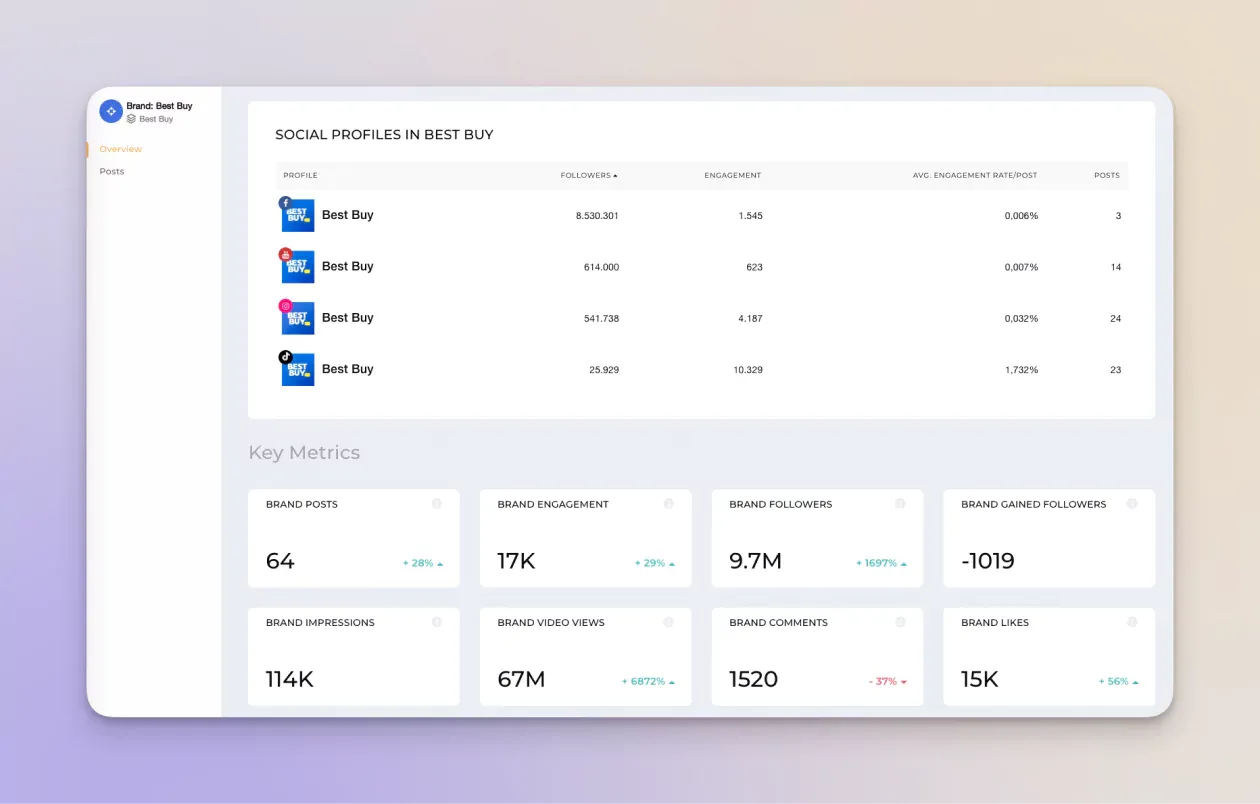
3. Do client interviews
Client interviews are valuable to understand how the brand is perceived and to get some qualitative feedback on marketing and communication efforts. “The one voice that should be heard is often lost in the noise,” says Matt Davies, brand strategy consultant, about the value of doing customer interviews.
You can conduct live interviews or, for a simpler approach, create an online survey, which you can distribute through newsletters and social media channels.
Ask questions about how well people know and recognize brand elements, what opinions and sentiments they have, and if they would recommend it to friends or not.
Once you conduct the interviews, analyze the answers and find patterns. Pay attention to details and use the learnings to complement the quantitative data from the previous step.
4. Conduct internal interviews
Don’t assume employees are in tune with branding efforts.
After all, a 2019 IBM study found that a staggering 72% of employees do not fully understand their company’s strategy.
When doing a comprehensive brand audit, internal interviews or surveys are advisable to get a sense of how the team sees the brand. Insights can be useful to refine employer branding efforts and to notice inconsistencies in the way the brand is seen externally and internally.
Such inconsistencies matter because, on the one hand, the perception of your team will be reflected in the image you project to clients sooner or later. On the other hand, a great brand perception within the team coupled with a less favorable external one can signal a problem in the promotional efforts.
5. Run a competitive brand audit analysis
Why am I looking at other brands when analyzing my own?
It's simple: because you want to be competitive (right?).
For example, you might think 1.000 new followers is great growth over 3 months. And it may well be.
But what if your direct competitor had a ten-fold growth?
What opportunity did they seize, or what social media strategy did they use to get people's attention?
A competitor audit helps you put your branding efforts into perspective to get a real feel of how you're performing. It also lets you analyze what other brands are doing so you can understand what works and what doesn't—without having to test it all on your own budget.
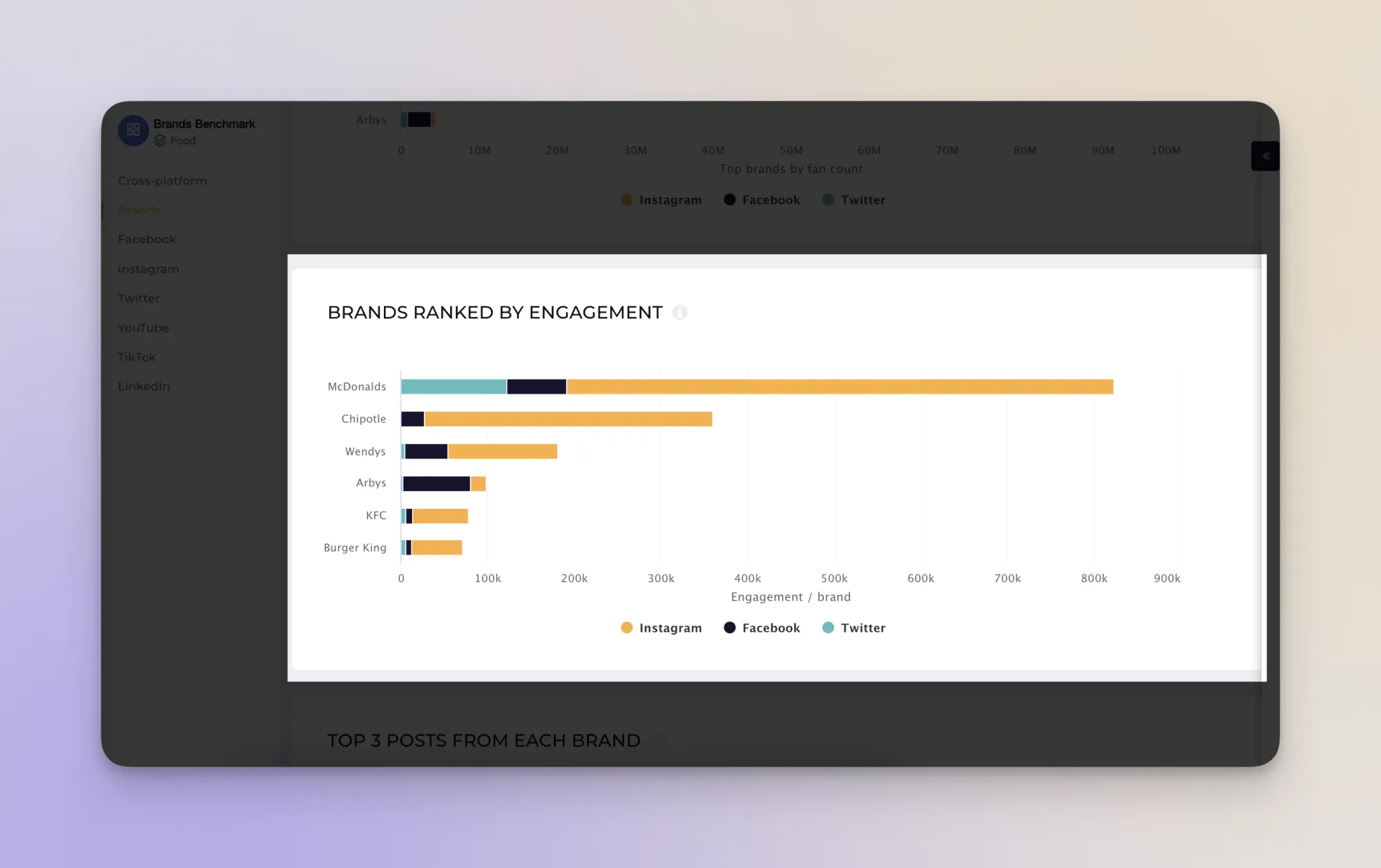
6. Draw conclusions and plan for action
Get your team together, as well as other relevant stakeholders, to present and discuss the main findings of the brand audit. Decide what the most important conclusions are and how you want to act upon them.
For example, a brand might discover that there are a lot of inconsistencies in image and messaging and make a plan to focus on correcting that. Another brand’s audit might uncover that it needs to adjust content pillars to be more relevant and competitive in social media.
Focus on a few lines of action, implement changes, and make sure to keep everyone updated on the results.
7. Repeat
As the company and the team grow, as new products get launched and new communication channels are tackled, it’s easy to lose track of efforts. Your brand image can get diluted without constant monitoring and a proactive attitude. So, plan for periodic audits to ensure brand consistency, growth, and alignment with changing business objectives.
Worried that audits eat away at the time needed to perform other tasks?
Luckily, you can create brand audit templates and use tools to streamline and automate much of the process.
Key elements to include in your brand audit template
To make the brand auditing process more efficient, create a template with key elements that will give you a good overview of the brand status at different points in time. This template serves as a quick but telling brand audit tool that marketing managers can use to make or inform strategic decisions.
Cross-channel brand analysis
Get a comprehensive overview of the brand performance across different communication channels, including Facebook, Instagram, Twitter (X), YouTube, or TikTok—without having to navigate and log into different dashboards.
Besides the key metrics at a glance in the Best Buy example above, you can get a breakdown of the follower growth, impressions, and engagement in different channels.
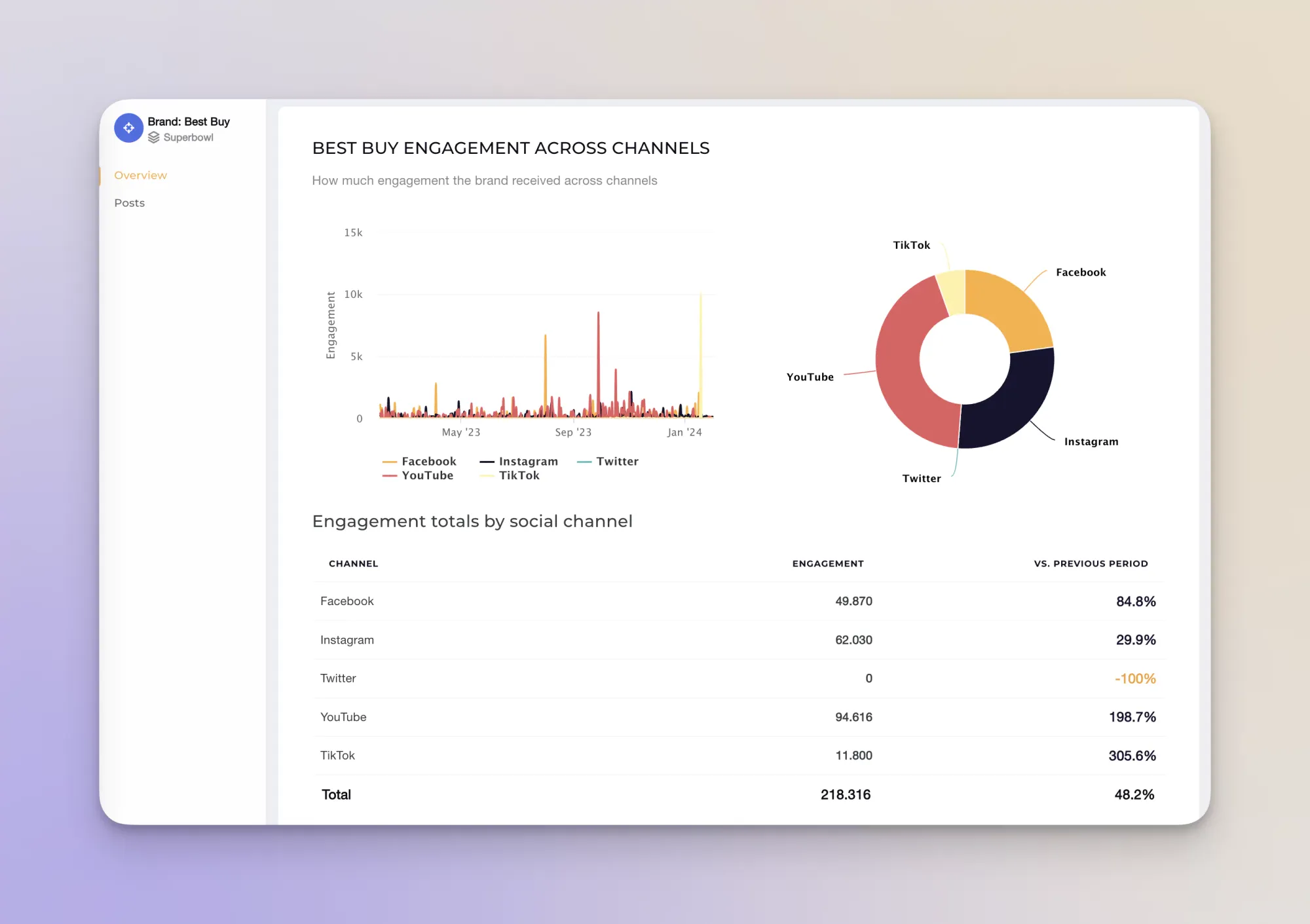
Identify the most engaged brand posts so you can see what content themes and formats work best on different social media platforms.
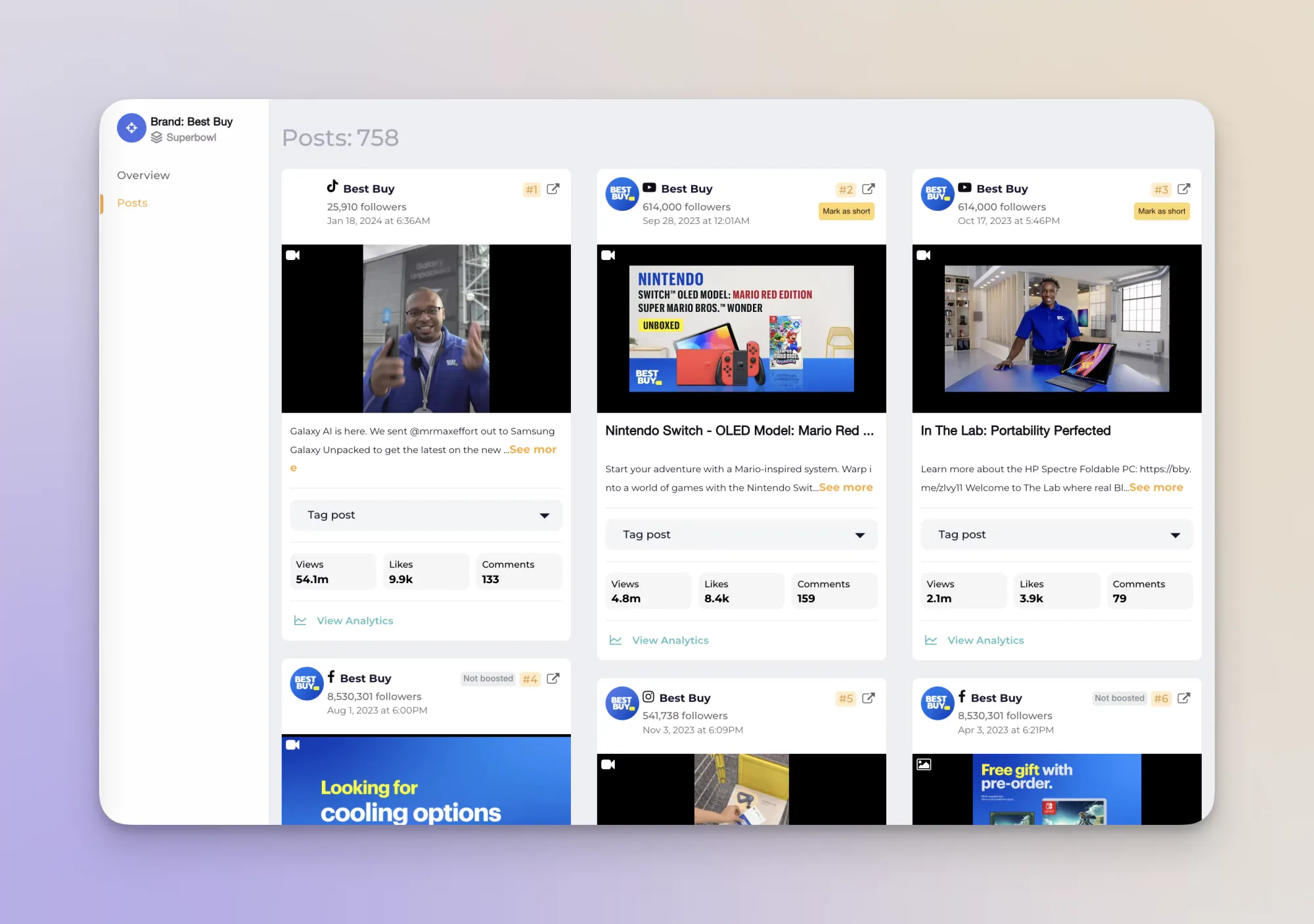
This cross-channel analysis is a time-saver for any social media manager or strategist looking to optimize a brand’s online presence or to contribute to a larger brand audit report with relevant, up-to-date data.
"Before using Socialinsider, we used to spend tons of time each month to get our reports done. So the Reporting feature they have is a huge win for us - we’re saving a lot of hours! We can get reports for our own pages and, plus, take a look at what our competitors are doing as well." - Ovidiu C., Small business
Brand sentiment and emotion analysis
A brand sentiment and emotion analysis shows you how people perceive your company. While traditionally done by surveying clients, social media has made it easier to observe users’ behavior and conversations around the brand.
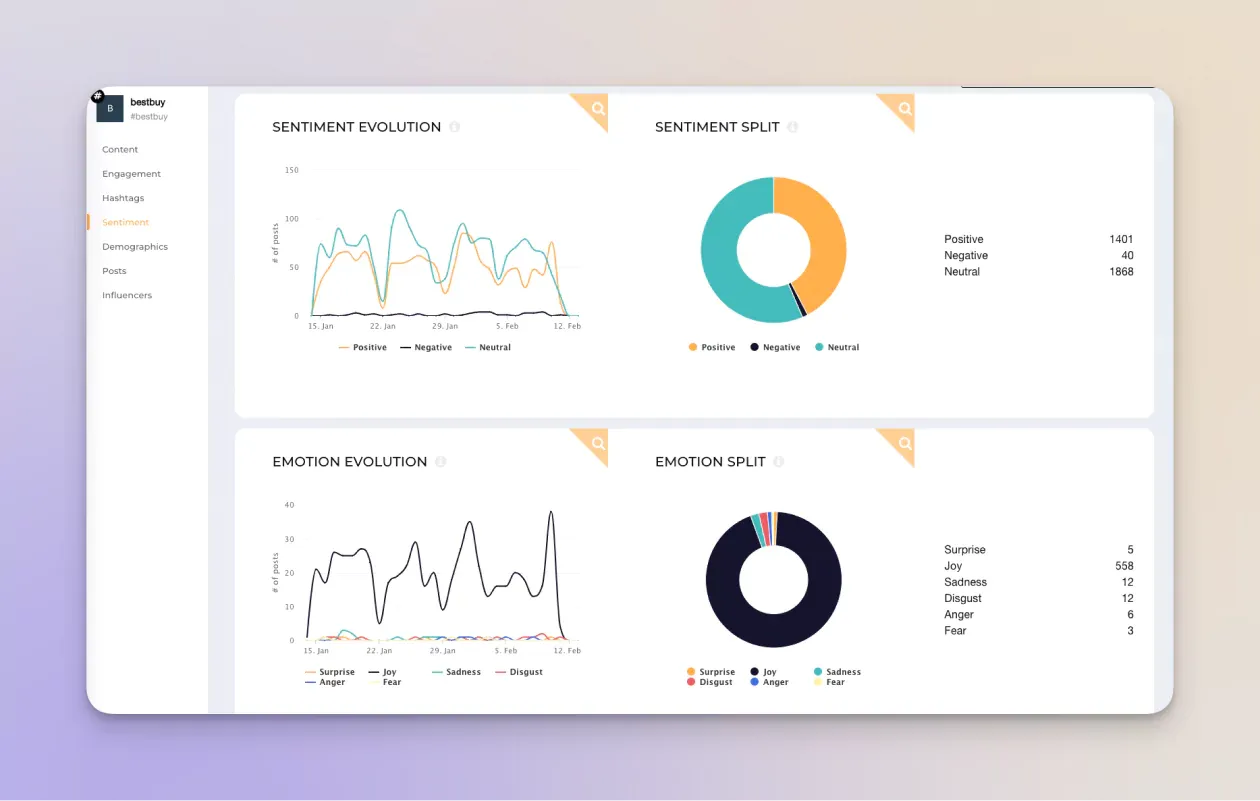
With Socialinsider, you can see how sentiment and emotion have evolved over time and connect ups and downs with different campaigns, messages, or other events.
Real-time insight into consumers’ attitudes toward your brand means you can prevent crises and take quick action toward a more positive story. It’s one of the best social listening tools for when you don’t have the time or resources to gather and process in-depth client feedback.
Cross-channel competitive analysis
Competitive data is a must in your brand audit template.
Fortunately, you can automate competitor analysis by adding brands’ social media pages to Socialinsider and getting an overview of their performance, including follower evolution, reach, impressions, engagement rates, types of social media posts, etc.
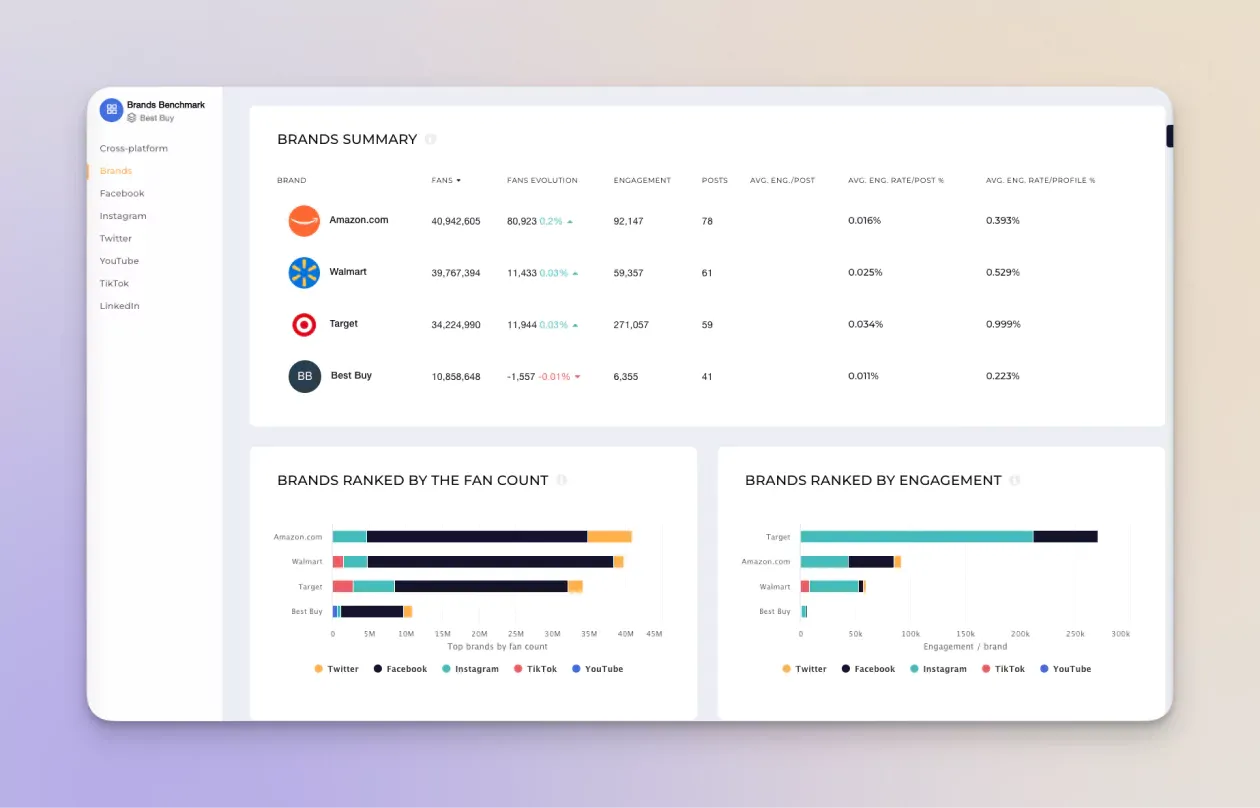
With this competitive analysis tool, you can review your competitors’ marketing strategies and take a closer look to understand their strategies, campaigns, and hashtags.
For example, if Amazon is your competition, it’s useful to understand what topics perform best and which are not that popular to help you improve your content plan.
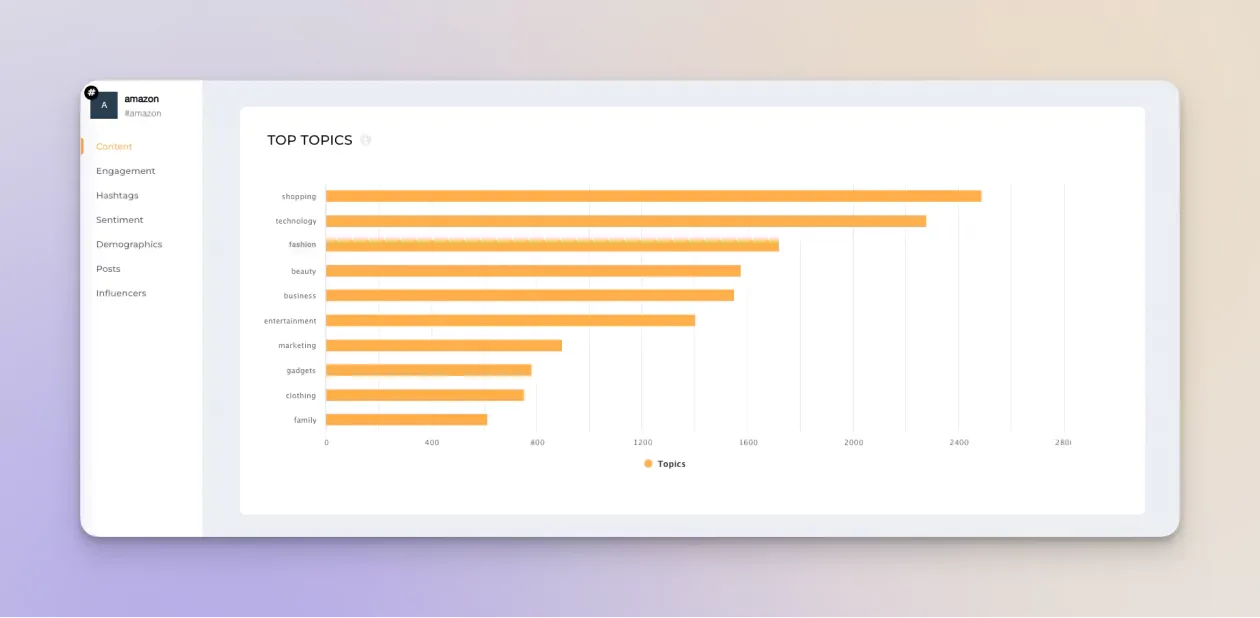
What’s more, you can identify influencers that collaborate with competitors to inform your own collaborations and social media strategy.
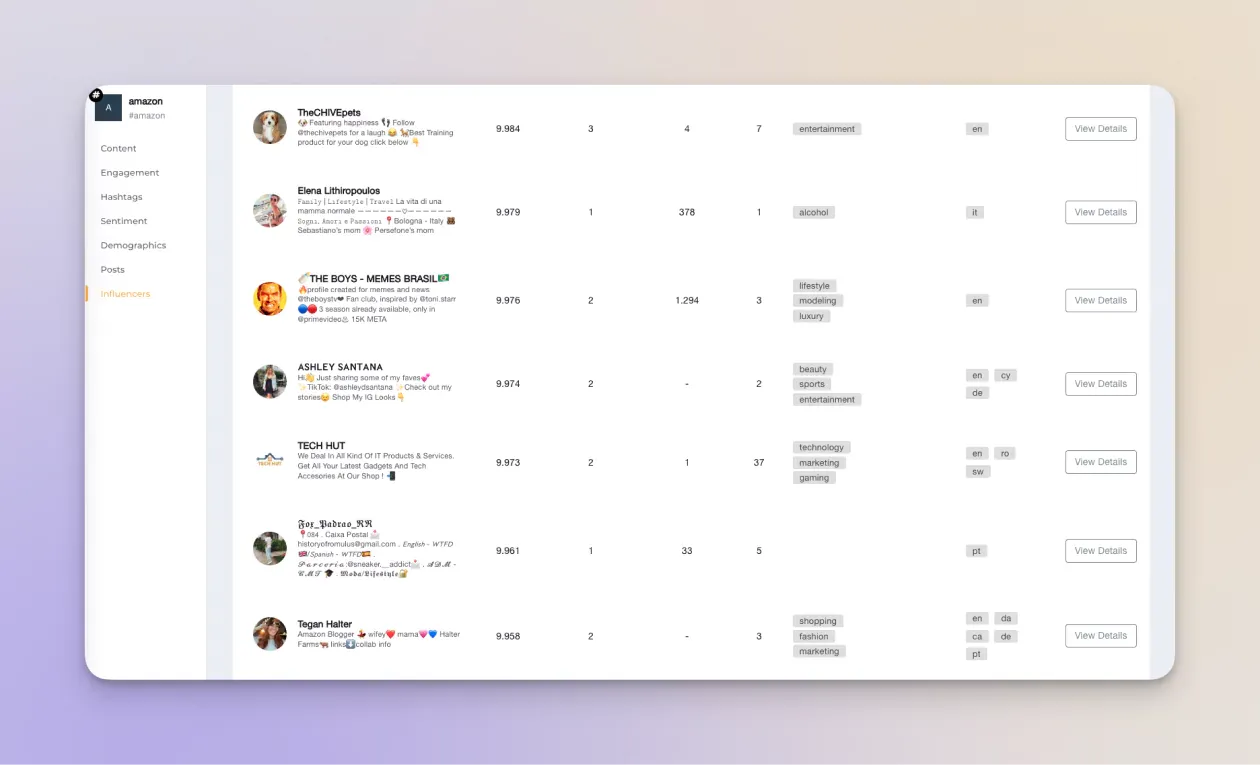
Socialinsider leverages the power of AI for better, more in-depth social media insights into branded or campaign hashtags, key influencers, and brand perception.
By creating a template with all this data, you have a brand audit framework with real-time high-level information and detailed, actionable insights.
This type of visual brand audit is useful for anyone on the team to understand performance, but mostly to decision-makers who have to allocate resources and constantly keep an eye on the brand’s health.
Final thoughts
The idea of doing a brand audit—especially if you’re new to the management role or are swamped with other priorities—can be daunting.
An audit seems like a big thing, and it can be.
Luckily, once you set up your framework with the most important data, social media analytics tools like Socialinsider can do the heavy lifting and provide the information you need to assess the brand at any given moment, inform stakeholders, and make quick strategic decisions that produce results.
FAQs about brand audit
1. How to do a brand audit?
To perform a brand audit, here’s the checklist you need to follow:
- establish the goal and scope of the process
- gather and organize brand data to understand performance
- conduct client and employee interviews to measure brand sentiment
- run a competitive audit analysis to get context and industry insights.
- identify key findings and conclusions and plan to act upon them.
- repeat the brand audit periodically to ensure brand consistency and to keep a competitive edge.
Use this brand audit checklist for an explanation of all the important steps.
2. How to measure brand audit?
Quantitative data about a brand’s performance is available in different analytics and social media dashboards. Qualitative data can be gathered and analyzed through surveys and interviews.
For an efficient, streamlined process, choose a tool such as Socialinsider that gathers data across channels for both your brand and the competition. It will help you make data-driven decisions without spreading resources too thin.
3. What is a brand audit example?
The Best Buy strategic audit example showcased above included a comprehensive view across online channels, an overview of the brand sentiment and emotion, as well as insights into competition. That is sufficient data to inform marketing strategies and plan for improvements.
Depending on the business, the brand audit can include more or fewer components, as described in the seven steps you need to take in the process.
Given that 77% of consumers prefer shopping with brands they follow on social media (2023 Sprout Social Index Report), an analysis of online channels is bound to be the biggest and most important part of the audit and the one that is most efficiently measured.







